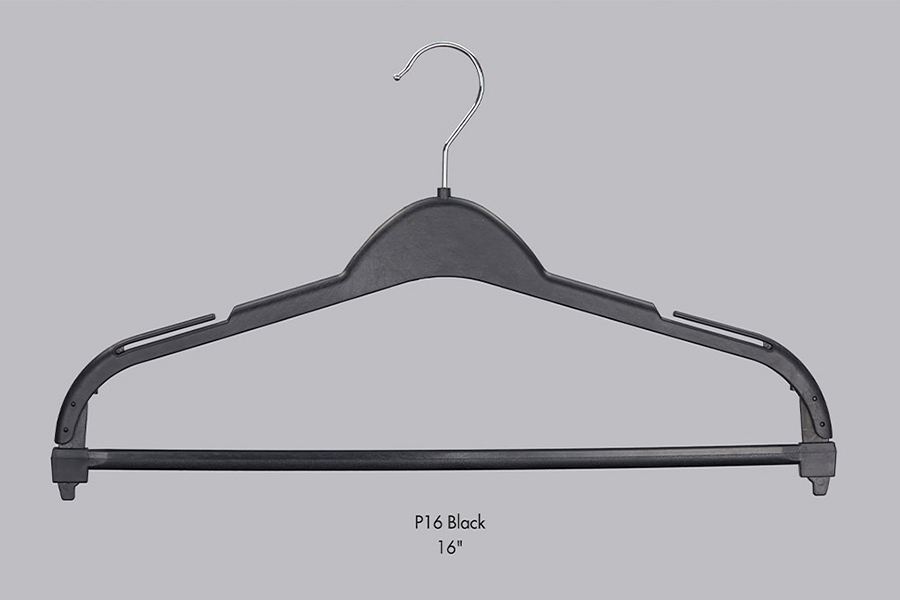How Much Space Do Hangers Need?
As a manufacturer of plastic hangers, we understand that efficient closet organization requires careful planning. Hangers are not all the same size, and understanding the space requirements for different types is essential for optimizing storage. This article provides clear, practical guidance on the space needed for various hanger sizes, from 8-inch children's hangers to 19-inch adult models.
Understanding Hanger Dimensions
Our plastic hangers are categorized by length, measured from tip to tip along the bottom bar. The width of the shoulder section also influences the overall space occupied. We define children's hangers as those ranging from 8 to 10 inches in length. Adult hangers span from 15 to 19 inches. Each size has distinct spatial requirements.
Space Requirements by Hanger Type
Children's Hangers (8" - 10")
An 8-inch children's hanger typically requires a horizontal space allocation of approximately 8.5 to 9 inches when hung on a rod. This accounts for the hanger itself and a minimal buffer to prevent tangling. A 10-inch hanger will need about 10.5 to 11 inches of linear rod space. For optimal accessibility and airflow, we recommend spacing each children's hanger 1 to 1.5 inches apart. This means that for every 10 to 12 children's hangers, you will need approximately one linear foot of closet rod space.
Adult Hangers (15" - 19")
Standard Adult Plastic Hangers require more significant space. A 15-inch hanger needs a minimum of 16 to 17 inches of linear rod space to hang without compressing adjacent garments. Our most common 17-inch adult hanger performs best with 18 to 19 inches of allocated space. For larger garments on our 19-inch hangers, we recommend allowing 20 to 21 inches per hanger. To maintain garment integrity and ease of access, a spacing of 2 to 2.5 inches between adult hangers is ideal. This translates to roughly 6 to 8 adult hangers per linear foot of closet rod, depending on the specific size within the 15" to 19" range.
Calculating Total Closet Capacity
To calculate the total capacity of your closet rod, follow this formula:
Measure the total available linear inches of your hanging space.
Identify the primary type of hanger you will use (e.g., 17" adult).
Allocate the required space per hanger (e.g., 19 inches for a 17" hanger).
Divide the total linear inches by the space per hanger.
*Example: A 60-inch (5-foot) closet rod dedicated to 17-inch hangers.*
60 inches / 19 inches per hanger = approximately 3.15 hangers per foot, or about 15-16 hangers for the entire rod.
This calculation provides a realistic maximum. For frequently accessed closets, we advise staying at 90% of this capacity to ensure easy movement and to prevent overcrowding.
Recommendations for Efficient Storage
Segment by Size: Group garments by hanger type. Dedicate specific sections of your closet to children's and adult garments. This prevents smaller hangers from being overshadowed and maximizes space efficiency.
Prioritize Vertical Space: Do not overlook the height of your closet. Using double-hung rods effectively doubles storage capacity. The lower rod is ideal for children's hangers or shorter garments on smaller adult hangers, while the upper rod accommodates longer items like coats on 19-inch hangers.
Maintain Buffer Zones: Always incorporate a small buffer between garments. This prevents clothes from becoming wrinkled, allows for adequate air circulation, and makes removing individual items a simple process without disrupting the entire row.
Conclusion
Proper space planning is fundamental to an organized and functional closet. Children's plastic hangers (8-10") require approximately 11 inches of space per hanger, while adult hangers (15-19") need between 17 and 21 inches. By accurately calculating your linear space and adhering to these spacing guidelines, you can maximize storage while preserving the quality of your clothing. As manufacturers, we design our hangers for durability and function, and pairing them with thoughtful organization will ensure your closet operates at its best.


